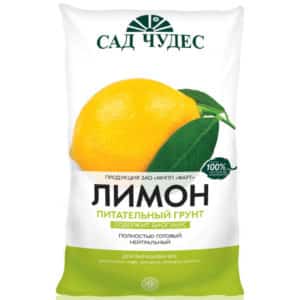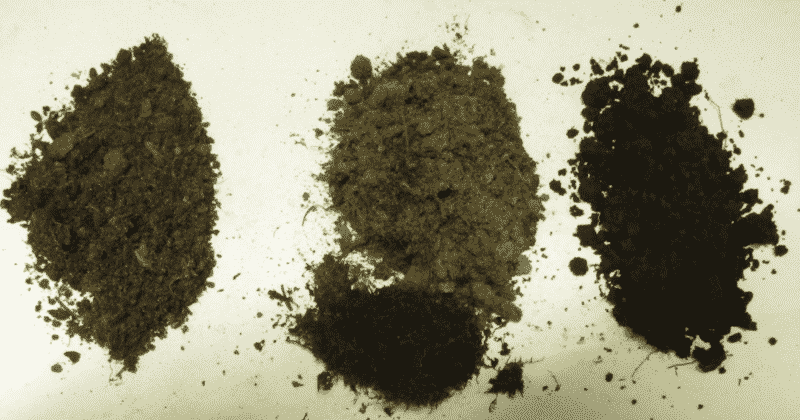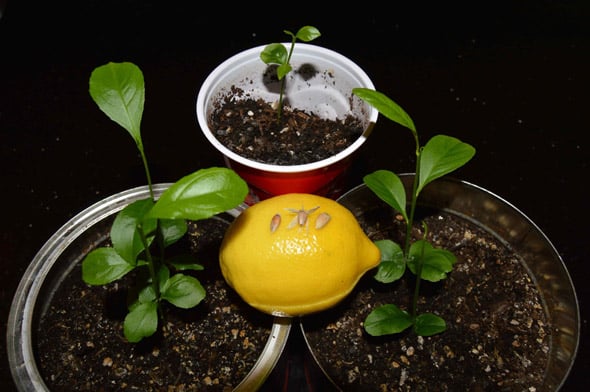Land for lemon growing at home
Plant lovers plant lemon trees not in the garden, but at home - in a pot. Such conditions are more suitable than others for a capricious exotic tree, because at home it is easier to provide it with proper care. One of the conditions for the beauty and health of a plant is balanced and nutritious soil. What should be the soil for lemon at home and how to prepare it, we will consider in the article.
What soil is needed for indoor lemon?
To grow indoor lemon, choose breathable and light soil. The optimal acidity level is 5.5-7 pH; too acidic soil leads to disease and death of the plant.
There should be no large lumps of earth in the soil. This prevents the root system from absorbing nutrients, causing micronutrient deficiencies. Also, there should be no leaves, branches or other foreign bodies in the soil.
The soil mixture is prepared from several components. A suitable option is the composition of garden and leaf soil. It is light and nutritious, and allows air and moisture to pass through well.
It is recommended to take loose garden soil and disinfect it before use to get rid of bacteria and insects. Garden soil is prepared in the summer by cutting off the layer and sifting it through a fine sieve.
Leaf soil is humus from fallen leaves. To prepare such soil for lemon, gardeners rake all the fallen leaves into a pile, which is watered with warm water and slurry.To reduce acidity, add 500 g of lime. The soil turns out loose, light and nutritious.
Attention! To increase the breathability of the soil, purified river sand is added. It prevents the spread of fungi and bacteria, which lead to rotting of the root system of indoor lemons. In addition, sand retains heat and moisture.
Preparing lemon soil at home
It is better to plant lemons in previously prepared soil. To do this, summer residents purchase the necessary ingredients and equipment and study the technology of soil preparation.
Let's study further what kind of soil is needed for lemon.
Required Ingredients
There are many options for making soil for indoor lemon. One of the most common is a mixture of garden, turf, and leaf soil with the addition of charcoal and manure. Nutrient soil is also obtained from a mixture of turf and leaf soil with the addition of peat.
That is, almost all technologies contain the following ingredients:
- garden soil;
- leafy;
- turf;
- peat;
- humus;
- river sand;
- charcoal.
To prepare soil for indoor lemon, artificial components are also used:
- Vermiculite. Externally similar to wood shavings, environmentally friendly and safe. It absorbs excess water and can replace river sand. Contains magnesium, calcium, iron and silicon.
- Dolomite. Useful not only for lemon, but also for all citrus fruits. Contains calcium and manganese, maintains an optimal level of soil acidity and prevents root rotting.
Basic Rules
When using garden soil, check that there are no roots, insects, or grass in it. If they exist, the soil is first cleaned and must be sifted through a sieve.
If leaf soil is used, it is preferable to take it from under linden trees. To do this, remove a layer of 5 cm and sift to get rid of large particles. Experts do not recommend using soil from under coniferous trees. It has a high level of acidity and contains substances harmful to indoor lemon.
If the recipe contains charcoal, use birch charcoal. It is crushed into powder, in this form it is absorbed faster. When preparing, make sure that all ingredients are well mixed together and do not contain foreign inclusions.
This is interesting:
Why home-grown lemons don’t bloom and what to do to fix it
Step-by-step instruction
Homemade soil for indoor lemon is better than store-bought soil.
Technology for preparing nutrient substrate:
- Mix turf, leaf and peat soil in equal parts.
- Add well-washed river sand in an amount of 10% of the total mass.
- Mix everything thoroughly.
- Add 40 g of granulated superphosphate to 1 liter of the finished mixture.
- Steam the mixture in the oven for 2 hours at a temperature of +90°C, cool.
Steaming destroys insect larvae and pathogens diseases. However, along with them, some of the useful substances disappear, and the microflora of the substrate deteriorates. To avoid this, only the soil (leaf, garden, turf) is steamed, and the remaining parts (peat, sand) are added at the end.

Fertilizer and soil care for homemade lemon
Indoor lemon should not be overdried, otherwise the plant will shed its leaves and die. Melt river or rain water is used for irrigation.In extreme cases, tap water warmed to room temperature will do.
Watering a lemon throughout the entire layer of earth, evenly distributing moisture. In summer, lemon is moistened 3 times a week, in winter - 1 time. Also, the amount of watering depends on where the plant is located. For example, if there is a battery, moisten the soil more often.
Lemon responds well to mineral liquid fertilizers. They are brought in for the 3rd year after landings, use superphosphate or ammonium nitrate. The plant also loves complex fertilizers, for example, Kemira or citrus mixture. They have a balanced composition. Fertilizers are applied once every 1.5 months.
Attention! To protect the lemon from diseases and insect pests, the ground is watered with a soap solution. 100 g of grated soap is poured into 1 liter of water and placed under a bush.

Conclusion
Before planting a lemon at home, it is recommended to study what kind of soil it likes. As a rule, it is a mixture of garden, leaf and turf soil with the addition of sand, charcoal and vermiculite.
The soil mixture should be nutritious and light, without large earthen lumps, grass, or roots. The ingredients are mixed and steamed in the oven to destroy dangerous germs and larvae. During the growing process, lemons are regularly watered and fed with mineral liquid fertilizers.